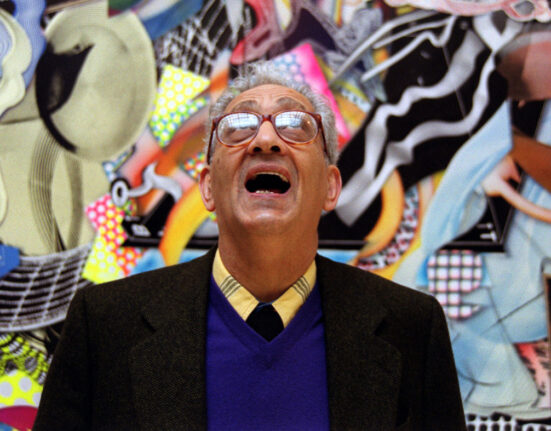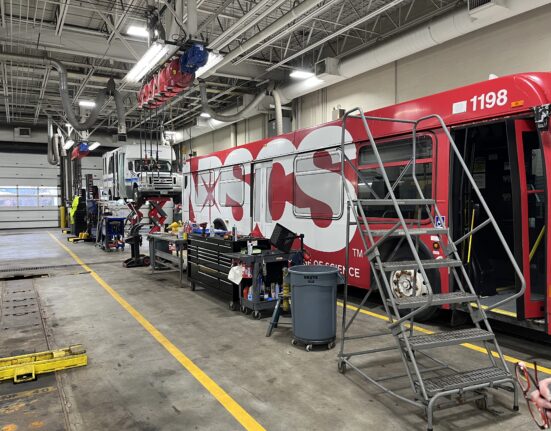Commentary
Editor’s note: This story is part of our Affordability for Artists package, which explores the impact of Seattle’s soaring cost of living on the local arts scene, why it matters and what may help.
Picture this: Capitol Hill, late 1980s.
Inye Wokoma — then a young, aspiring artist and creative writer — is serving up espressos and lattes to a parade of other creatives, a job that leaves plenty of time to experiment with different forms and media.
Art is in the air. “You could walk down Broadway and feel that every third or fourth person was some kind of creative person,” said Wokoma, now an established multimedia artist.
Not anymore. Seattle still has pockets of extraordinary creativity, said Wokoma, but gone are the days when artists and artistry were everywhere, woven into the city’s texture.
From Coast Salish wood carving to glass art, from Hendrix to grunge, this region has long cultivated phenomenal talent. But as Seattle’s affordability crisis reaches a fever pitch and artists move away or take more jobs to keep up, our reputation as a nurturing place for the arts increasingly feels like a thing of the past, Wokoma said.
“It’s more challenging to build and sustain a creative community,” Wokoma said, “because it just takes so much just to try to do anything.”
Wokoma is one of more than 600 King County-based artists who responded to The Seattle Times 2024 Affordability for Artists Survey.
We created the survey because we wanted to take the pulse of the local art scene, from the ground up. There had already been plenty of discussion about how rising prices and lingering pandemic effects have impacted organizations, but how were artists faring? We were interested in putting more data behind something we knew anecdotally — that Seattle had become increasingly inhospitable to working artists — and hear from creatives directly, as many as possible. This felt especially pertinent as the affordability crisis in the state and country showed no signs of letting up.
What emerged from the hundreds of first-person accounts was how much more of an uphill battle it is to be an artist in the region compared to even just a handful of years ago. How burnt out and isolated people feel. How numerous creatives have left, and how others, dedicated to staying, are slowly retreating from art-making as jobs sap their energy and time.
Many local artists are still making incredible, experimental work against the odds. But what would it take to build a future where it isn’t this hard?
To be clear, Seattle’s cost of living crisis has left few people — artists or not — untouched. For many, buying a house is increasingly out of reach.
Well, except for millionaires.
Earlier this spring, right as I waded through hundreds of firsthand survey accounts detailing how much harder it has become to survive in this region, King County’s median home price topped $1 million. As I read through artists’ descriptions of apartments infested with mold and bugs, broken water heaters and landlords violating rental laws, we learned that the number of millionaires in Seattle grew 72% between 2013 and 2023 and that Seattle now ranks No. 2 for “millionaire density,” with about 1 in every 14 people in the city a millionaire.
The contrast was jarring. But these things are connected: The loss of crucial experimentation and diversity in an art scene is one of the many byproducts of widening wealth inequality.
“This is the problem. There is no other problem,” said Rachel Ravitch, a local designer and sculptor. “Any discussion on affordability that doesn’t address the wealth gap is a waste of breath.”
Like Ravitch, multiple people pointed out the issue goes beyond the arts. Several also stressed that artists aren’t a special class more uniquely deserving of, say, affordable housing.
“For me, I think the most exciting thing is trying to think about how the struggles of artists intersect with the struggles of people in Seattle generally who may be housing, health or food insecure,” longtime Seattle artist Matthew Offenbacher wrote. “There’s so much potential power in solidarity across, inside and outside artist communities.”
So why then, are we singling out artists?
Because the health of our creative ecosystem concerns all of us, artists or not. Without it, we lose what makes a city interesting and hollow out the very thing we pride ourselves on: being a hub of creativity and innovation.
The ecosystem analogy is — while sometimes overused — a helpful one: To get the tall evergreens and the old-growth trees, you also need the underbrush, the mushrooms in the soil, the critters rooting around. To get Nirvana on MTV, you need the dingy bars, indie magazines and the legions of scrappy artists with plenty of time to mess around. “We love to be the city that originated grunge,” said local dancer-choreographer Kaitlin McCarthy, “but we aren’t supporting the kind of environment where that type of innovation can happen.”
It’s not just about laying the groundwork for a famous export product. Creativity makes our region better in innumerable ways.
There are the quantifiable, economic benefits: Art — and artists — can help drive people to a city (to live, work and visit) and foster business and foot traffic. As cities struggle to recover from the pandemic, policymakers look to artists to carry the burden of “revitalization” and love to tout artists’ abilities to make a city, a neighborhood or a vacant property more appealing. But how much do artists reap the benefits? In this context, it feels especially salient to point out how they’re left behind by a changing region.
But casting the issue only in an economic light is myopic. While I often report on how the economy impacts the arts and vice versa, that’s not why I seek out art in both my personal and professional life.
Art simply makes a city (and life, for that matter) worth living in.
It can be hard to transcend clichés when making a case for art. Words like “togetherness” and “belonging” feel too hackneyed, headlines about how art improves mental health and social engagement too anodyne. How do you describe the electrifying concert that made you feel less alone; the tender painting that moved you to tears; the outdoor dance performance that changed how you see the city?
These days, it feels like so many things are fraying, even broken. We’re lonelier and more distracted than ever. Looking at, or being a part of something outside ourselves, matters — even if we can’t put a dollar amount to it.
“If we don’t have dance, if we don’t have music, if nobody can afford to make those things,” local artist Launa Lea told me, “it’s going to be a very dreary place.”
We have a lot to lose. But in a sea of bad news and headlines about home prices and centimillionaires, these discussions with artists are also a reminder of what we gain when we engage with art. Yes, the beauty and the togetherness and all that.
So as you turn these pages and take in a bleak reality, I hope you also think about your magical moments — and make plans to go create more. As you do, consider your role and place in the ecosystem, not as a passive bystander but an active participant: What seeds can you plant?
_____
This coverage is partially underwritten by the M.J. Murdock Charitable Trust. The funder plays no role in editorial decision making and The Seattle Times maintains editorial control over this and all its coverage.







